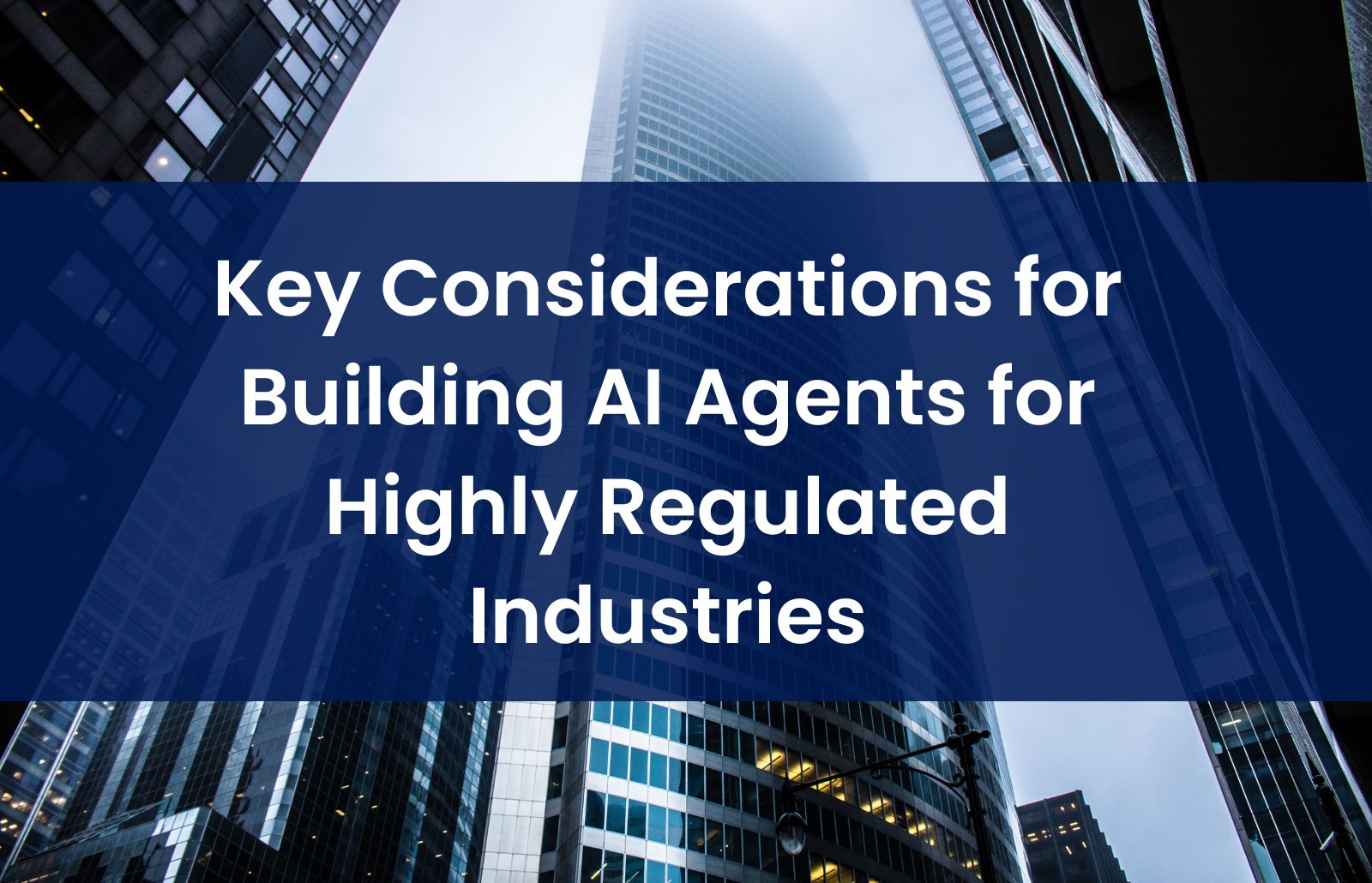Introduction
Artificial intelligence (AI) is transforming every industry while highly regulated sectors such as finance, healthcare, and legal services face distinct difficulties. Developing AI agents for regulated industries demands developers to maintain equilibrium between innovative approaches and strict compliance and security standards. Organizations need to operate within intricate legal frameworks and data protection mandates while upholding ethical standards to ensure their AI solutions stay both scalable and effective.
The article examines essential elements required to develop AI agents for highly regulated industries with an emphasis on compliance requirements alongside security measures and ethical practices for operational efficiency and transparency.
Understanding Regulatory Compliance
Deploying AI agents in heavily regulated sectors requires a foundation built on regulatory compliance. Every sector follows distinct regulations and guidelines which establish how AI systems operate to maintain fairness and accountability while ensuring precise operations.
Industry-Specific Regulations
Every sector operates under unique regulatory frameworks that they are required to follow.
Healthcare: HIPAA in the U.S. and GDPR in the EU are two key regulations that AI solutions need to follow. These legal requirements set rigorous standards for patient data privacy along with informed consent and security measures.
Finance: Financial institutions operate under regulations like the Sarbanes-Oxley Act and the Basel III framework. AI agents need to adhere to anti-money laundering policies alongside fraud detection rules and fair lending standards.
Legal: AI applications within the legal field need to follow American Bar Association (ABA) standards to prevent AI legal advice from breaching attorney-client privilege or ethical requirements.
Building Compliance-First AI
AI developers need to follow these strict standards.
- Incorporate Compliance by Design: Developers need to establish compliance as the fundamental principle of AI systems and integrate relevant industry standards throughout the development process.
- Conduct Regular Audits: Regular audits and ongoing monitoring processes help maintain AI solution compliance with changing regulations.
- Ensure Explainability: Explainable AI decision-making is a frequent regulatory requirement for AI developers. The application of interpretable models together with methods like SHAP (Shapley Additive Explanations) allows for transparent AI systems.
Data Security and Privacy
Developers working on AI agents for highly regulated industries must prioritize data security and privacy protection. AI models need large datasets to function properly but the processing of sensitive information leads to potential security breaches and compliance issues.
Protecting Sensitive Data
Organizations should implement the following security measures:
- Data Encryption: Proper encryption of both stored data and data during transmission protects sensitive information from unauthorized access.
- Access Control: Role-based access control (RBAC) paired with multi-factor authentication (MFA) restricts access to essential AI functionalities and datasets.
- Anonymization and Pseudonymization: Differential privacy methods enable AI models to train on datasets without revealing specific individual records.
Complying with Data Regulations
Data collection and usage practices are strictly governed by regulatory bodies through the enforcement of rigorous rules. AI agents must:
- Obtain Explicit Consent: AI models that process personal data need to verify users have given informed consent before beginning data processing.
- Implement Right-to-Be-Forgotten Mechanisms: AI solutions must include options for users to request data deletion according to GDPR and other privacy statutes.
- Use Secure Data Storage Solutions: Cloud-based AI solutions need to follow standards such as ISO 27001 and SOC 2 to maintain strong security measures.
Ethical Considerations and Bias Mitigation
AI agents operating in highly regulated sectors must maintain ethical standards while actively preventing biases that could result in harmful or inequitable consequences.
Addressing AI Bias
AI bias creates discrimination risks, especially in sensitive fields such as healthcare and finance. Steps to mitigate bias include:
- Diverse Training Data: Datasets that include diverse demographics and scenarios help minimize bias.
- Fairness Audits: Systematic assessments through fairness metrics including disparate impact analysis enable both detection and reduction of bias.
- Human-in-the-Loop (HITL) Approaches: The integration of human supervision within AI decision-making frameworks maintains accountability and fairness.
Ethical AI Governance
Organizations must set up AI ethics committees to oversee deployments and uphold ethical standards through review processes. AI transparency needs to be prioritized through thorough documentation alongside educational initiatives that inform users about AI decision-making processes.
Ensuring Transparency and Explainability
Highly regulated industries require AI agents to be transparent and explainable to build trust. Both regulators and end-users need to comprehend the decision-making processes of AI models.
Techniques for AI Explainability
- Interpretable Models: Whenever feasible organizations should use decision trees and linear regression models in place of complex neural networks.
- Post-Hoc Explainability Tools: The use of post-hoc tools such as LIME and SHAP enables detailed explanations of AI decision-making processes.
- Audit Trails: AI accountability and traceability need enhancement through comprehensive documentation of decision-making processes.
Regulatory Demands for Transparency
Organizations face increasing demands from regulators to provide proof of their AI systems’ transparency. The EU’s AI Act requires high-risk AI systems to disclose the workings of their decision-making procedures along with their restrictions.
Reliability and Operational Resilience
AI agents need to possess robustness, reliability, and resilience in order to deliver consistent performance across regulated environments.
Strategies for Reliable AI Deployment
Continuous Monitoring: Real-time monitoring tools identify anomalies to prevent failures in AI systems.
- Automated Testing: Recurring automated testing functions as a method to verify AI model accuracy while uncovering biases or errors in their operation.
- Failover Mechanisms: Backup systems enable AI agents to maintain functionality when failures occur.
Adapting to Regulatory Changes
AI systems need adaptability to maintain compliance as regulations undergo changes. Organizations should:
- Stay Updated on Regulatory Changes: Create specialized compliance teams whose responsibility will be monitoring changes in laws and guidelines.
- Enable Model Versioning: Version control systems track AI model changes while helping meet regulatory requirements.
- Regular Training and Awareness Programs: AI teams should receive education about regulatory developments and best practices to achieve compliance standards.
AI agents in highly regulated sectors must innovate consistently while meeting strict compliance standards. To thrive in highly regulated industries AI agents need to innovate constantly while meeting strict compliance standards. The implementation of federated learning, edge AI and blockchain technology creates opportunities to improve security measures while strengthening privacy protections and ensuring regulatory compliance.
Key Trends to Watch
- Federated Learning: AI models can process decentralized data sources without revealing raw data which improves both privacy and security measures.
- Explainable AI (XAI): Progress in interpretability will increase the transparency and trustworthiness of AI decision-making processes.
- Regulatory AI Sandboxes: Governments can create controlled testing environments for AI systems to verify compliance before complete implementation.
Conclusion
AI agent development for highly regulated sectors demands a deliberate strategy that emphasizes compliance alongside security and ethical transparency. Organizations need to merge these considerations into their AI strategies which will help them develop AI systems that are both responsible and resilient.
Businesses can deploy AI agents in highly regulated industries successfully through compliance-first AI design and by strengthening data security while mitigating bias and enhancing transparency and operational reliability. Success depends on understanding regulatory updates while using new technologies and constantly improving AI systems to adhere to changing standards.

